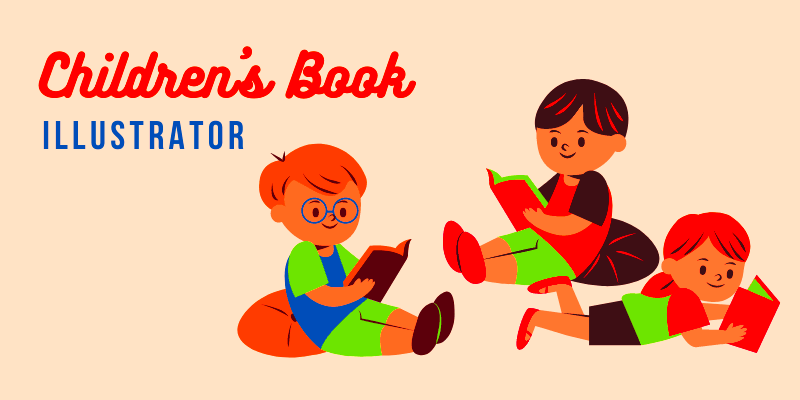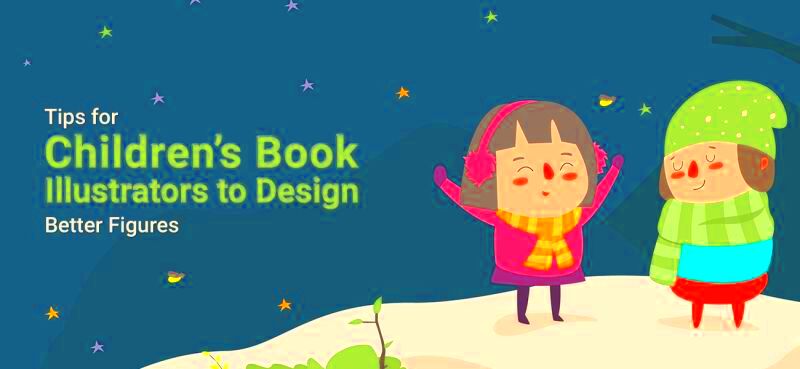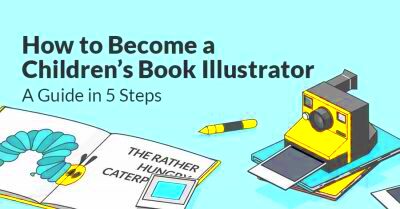Being a children's book illustrator is not just about drawing pretty pictures. It's about bringing stories to life through art. Illustrators work closely with authors to create visuals that match the text and enhance the reader's experience. Your illustrations should not only capture the attention of young readers but also convey emotions and themes effectively.
The role often includes:
- Reading and interpreting manuscripts
- Creating character designs and settings
- Collaborating with authors and publishers
- Understanding the target age group and their preferences
- Adapting to feedback and making necessary changes
In this role, it's crucial to think about how your art can support the story. Each illustration should complement the text, helping children visualize the narrative while sparking their imagination.
Build Your Artistic Skills and Style

To succeed as a children's book illustrator, you'll need a solid foundation in artistic skills. Start by practicing regularly and exploring various techniques. Here are some tips to help you build your skills:
- Study other illustrators: Analyze the work of successful children's illustrators. What styles do you like? What techniques do they use?
- Experiment with different mediums: Try using watercolors, digital art, or pencil sketches. Finding what feels right for you can take time.
- Take art classes: Whether online or in-person, classes can provide valuable guidance and feedback.
- Practice drawing daily: Make a habit of sketching every day, even if it’s just for a few minutes.
Your style will evolve over time, so don't rush it. Focus on what makes your illustrations unique, and don't be afraid to let your personality shine through your work.
Also Read This: How to Change Negative Feedback on Fiverr
Create a Portfolio That Stands Out

A strong portfolio is essential for any freelance illustrator. It showcases your best work and helps potential clients understand your style and capabilities. Here are some steps to create an impressive portfolio:
- Select your best pieces: Include a variety of illustrations that highlight your skills and style. Aim for quality over quantity.
- Tailor your portfolio: Consider the type of projects you want to attract. If you wish to illustrate picture books, include related work.
- Keep it updated: Regularly refresh your portfolio with new pieces to reflect your current style and skills.
- Create an online presence: Use platforms like Behance or create your own website to showcase your work. Make sure it is easy to navigate.
Remember, your portfolio is often your first impression. Make it count by ensuring it is visually appealing and clearly represents your artistic voice.
Also Read This: How to Sign Up for Fiverr: A Step-by-Step Guide
Find Your Target Audience and Market

Finding your target audience is crucial in the world of children's book illustration. Understanding who your illustrations resonate with helps you tailor your style and marketing efforts. Children’s books often target specific age groups, and each has unique preferences. Knowing these can guide your work effectively.
Here are some tips to help you identify your target audience:
- Research age groups: Different age ranges have different needs. For instance:
- Engage with your audience: Consider attending events like book fairs or workshops to connect with kids and their parents.
- Utilize social media: Platforms like Instagram and Pinterest are great for sharing your work and seeing what appeals to children and parents alike.
| Age Group | Preferred Content |
|---|---|
| 0-3 years | Bright colors, simple shapes, and repetitive text. |
| 4-7 years | Engaging stories with relatable characters. |
| 8-12 years | More complex narratives with illustrations that support the text. |
By identifying your target audience, you can create illustrations that truly connect and ensure your work stands out in a crowded market.
Also Read This: How to Set Up Your Fiverr Account
Network with Authors and Publishers
Networking is key in the illustration industry. Building relationships with authors and publishers can lead to exciting opportunities and collaborations. Here are some effective ways to expand your network:
- Attend industry events: Book fairs, illustration conferences, and workshops are perfect for meeting authors and publishers face-to-face.
- Join online communities: Platforms like LinkedIn, Instagram, and dedicated forums for illustrators can help you connect with industry professionals.
- Participate in critique groups: These can be found locally or online. They allow you to share your work and receive feedback while connecting with others in your field.
- Reach out directly: Don’t hesitate to send a friendly email to authors or publishers whose work you admire. Introduce yourself and express your interest in collaboration.
Networking is about building genuine relationships. Be open and approachable, and you'll find that many are willing to help you on your journey.
Also Read This: Is Fiverr Good for Artists? Insights from Reddit
Set Your Rates and Manage Finances
Setting your rates as a freelance illustrator can be challenging, but it’s essential for your success. Knowing your worth while remaining competitive is key. Here are steps to help you set your rates and manage your finances:
- Research industry standards: Look into what other children's book illustrators charge. This gives you a baseline for your rates.
- Consider your experience: If you're just starting, you might want to set slightly lower rates to attract clients. As you gain experience, gradually increase your fees.
- Decide on pricing models: Consider whether you will charge per project, by the hour, or based on the complexity of the work. Some options include:
- Hourly rates
- Flat fees for projects
- Royalties for book sales
- Track your expenses: Keep a close eye on your income and expenses. Use software or apps to help manage your finances efficiently.
- Save for taxes: As a freelancer, it’s important to set aside money for taxes throughout the year. A good rule of thumb is to save around 25-30% of your income.
By setting clear rates and managing your finances wisely, you can build a sustainable career as a freelance children's book illustrator.
Also Read This: How to Rank Fiverr Gig on First Page
Utilize Online Platforms to Find Work
In today’s digital age, online platforms are a goldmine for freelance illustrators. They provide opportunities to showcase your work, connect with clients, and find projects that suit your skills. Knowing which platforms to use can help you land the right gigs. Here are some popular options to consider:
- Freelance job boards: Websites like Upwork, Fiverr, and 99designs are dedicated to freelancers. You can create a profile, showcase your portfolio, and bid on projects that interest you.
- Social media: Platforms like Instagram and Pinterest are visual-centric, making them ideal for artists. Share your work regularly, use relevant hashtags, and engage with your audience to attract potential clients.
- Online marketplaces: Sites like Etsy allow you to sell your illustrations directly to customers. This can be a great way to earn income while showcasing your style.
- Networking platforms: LinkedIn is excellent for connecting with industry professionals, publishers, and authors. Building a strong LinkedIn profile can open doors to collaborations.
- Art communities: Join websites like Behance or Dribbble where you can display your portfolio, get feedback, and network with other creatives.
By utilizing these online platforms effectively, you can expand your reach and increase your chances of landing exciting illustration projects.
Also Read This: What is a Printable Resolution File on Fiverr?
Frequently Asked Questions
As a freelance illustrator, you might have some questions about the journey ahead. Here are answers to a few common queries:
- How long does it take to become a successful illustrator? Success varies by individual. It often takes time to build a portfolio and network, but dedication pays off.
- Do I need a degree to be an illustrator? No formal degree is necessary. Many successful illustrators are self-taught. What matters is your skill and passion.
- How do I deal with client feedback? Take feedback positively and see it as a way to improve. Communication is key. Clarify any misunderstandings and be open to revisions.
- What tools do I need for illustration? Basic tools include sketchbooks, pencils, digital tablets, and software like Adobe Illustrator or Photoshop, depending on your style.
- How do I stay motivated? Set goals, create a routine, and surround yourself with other creatives for inspiration and support.
These FAQs can guide you as you navigate your path as a freelance illustrator.
Conclusion
Becoming a freelance illustrator for children’s books is an exciting and rewarding journey. By understanding your role, developing your skills, and effectively marketing your work, you can carve out a successful niche in the industry. Remember to build a strong portfolio, network with industry professionals, and utilize online platforms to find work.
Don’t forget to manage your finances wisely and stay informed about your target audience. Embrace the challenges and keep learning along the way. With passion and perseverance, you can create enchanting illustrations that inspire young readers and leave a lasting impact in the world of children’s literature.




